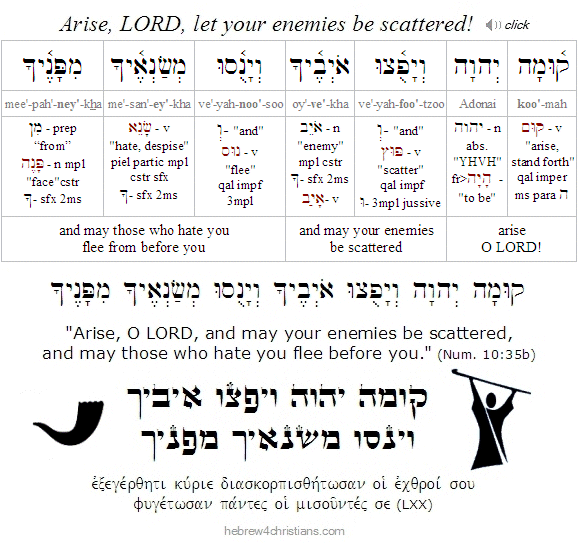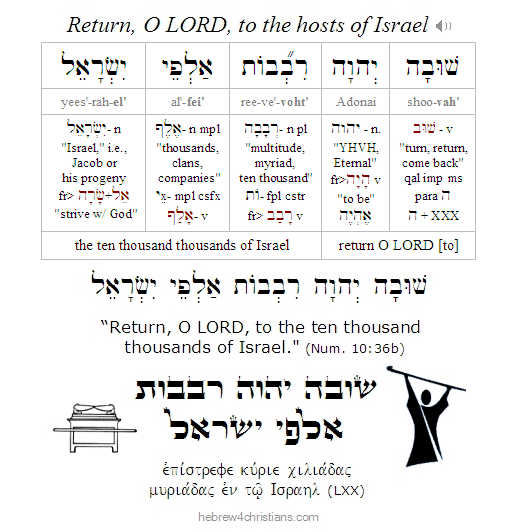|
|
|||||||||||||||||||||
 |
|||||||||||||||||||||
 |
|||||||||||||||||||||
|
|
||||||||||||||||||||||||||||
|
Our Torah portion for this week (Beha'alotekha) includes a textual oddity that warrants a close look from believers in Yeshua the Messiah (ישוע משיח ישראל). An "inverted Nun" (called Nun Hafuchah) appears both before and after Numbers 10:35-36: |
|
Some of the sages state that this passage is (deliberately) out of place in the narrative, and the inverted Nun alludes that it should have been inserted some 50 (נ) verses earlier. In the Talmud (Shabbat 115b, 116a), however, it is stated that any part of the Torah with 85 or more letters is itself considered a "book," and therefore according to some of the Jewish sages this passage of Scripture actually demarcates a separate book of the Torah! If so, instead of the five books of Moses, we would have seven: 1. Genesis So what does this "book" of the Torah say? Well, before Moses would lead the Israelites to a new station in the wilderness, he would order the ark to be moved by the Levites and then would chant "Arise, O LORD, and let your enemies be scattered, and let those who hate you flee before you!" In Hebrew:
From a Messianic perspective, it is fascinating to see that what immediately preceeds this "book" is the story of Yitro (Jethro), Moses' Gentile father-in-law, who was offered to partake of the blessings of Israel. This is a perhaps a picture of the so-called "Church age" - i.e., the time when God would offer His salvation to the nations of the world (as represented by Jethro) just before a time of purging of national Israel. In other words, we can read this parenthetical "book" as a time of special dispensation for the nations of the world to turn to the "Son of Life" and be saved.
|
|
Hebrew for Christians |
|||||
|
|||||




